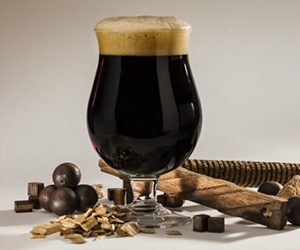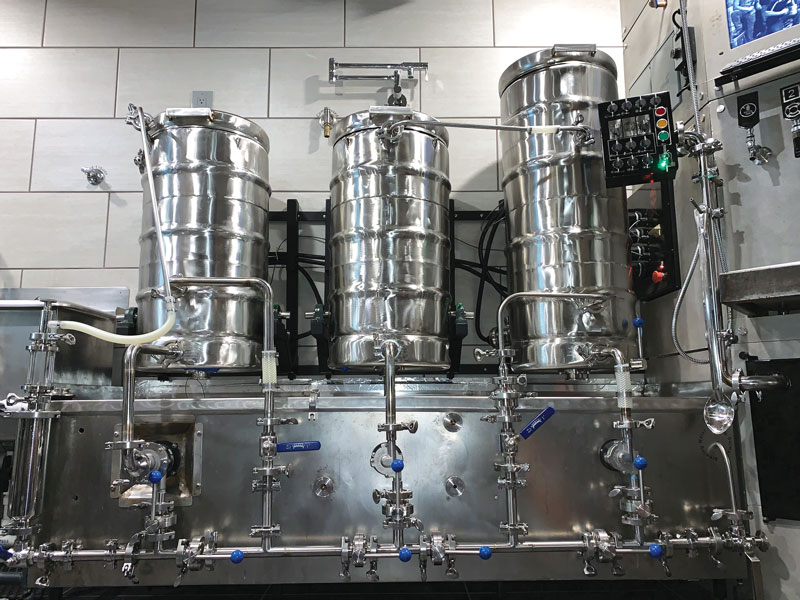Brewing Oktoberfest: Tips from the Pros
Credit Germany for planning ahead. Traditional Märzen is brewed in the late winter and early spring months to be enjoyed in beer gardens in the fall. Three brewers discuss what it takes to brew the best Oktoberfest.
Brewer: Paul Philippon, The Duck-Rabbit Craft Brewery in Farmville, NC
At Duck-Rabbit, we brew a traditional Märzen. When I formulated the recipe, I wanted a soft malt character. The malt is dominant, but think of it as a subtle bready flavor — it’s not going to knock you over the head like a doppelbock. It is soft, round, light bodied and has some toasty characters, which come from using Munich malt.
I like to use a lot of Munich malt in this style — about 50% of the total grain bill, and I use domestic Munich malt. I use domestic malt, unless I can’t get something domestically, because I’m an American brewer and I use American products as much as I can. Our Munich is a 2-row variety, which is what you would find in European malt.
We use a lager yeast strain for our Märzen. I want something that is going to be very clean and crisp, but doesn’t ferment out too dry because I want some residual malt characteristics. I also want a yeast that does well at relatively low temperatures. Pitch cool and pitch heavy. We typically aim for around 53 °F (12 °C) and ferment for around two weeks. We try to leave it in the tank for lagering for a good seven weeks.
If you are thinking of brewing this style, understand the beer before brewing it. You’re not trying to make a malt bomb. You want something crisp and delicate without being too light
in body.
Brewer: David Berg, August Schell Brewing Co. in New Ulm, MN
At August Schell, we brew a traditional Märzen. As a 150-year-old lager brewery that specializes in German beers, no other styles were considered.
As with all our beers, the most important characteristic with this style is a sense of balance. Of course, when talking about different styles of beer, the balance is not always the same. For an Oktoberfest, you want to balance the hops with the malt to prevent the beer from being overly cloying, yet without interfering with the bready flavors of the style.
For malt, we use a blend of two-row, Munich malt, and caramel 40.
We ferment our Oktoberfest with one of our house lager strains, which is a descendant of the Christian Schmidt strain. At home, I would recommend any of the various German lager strains that are available from commercial yeast vendors. Always follow the temperature recommendations that come with your yeast. We ferment our beer at 54 °F (12 °C), which is within the range for our yeast. Some lager strains prefer a cooler temperature than ours. Our lagering time is four weeks.
I would recommend sticking to Noble hop varieties (Hallertau, Tettnang, etc) or their new world hybrids (Liberty, Mt. Hood, etc). I prefer hops that exhibit a more flowery, spicy character.
As with brewing any lager, temperature control is critical. Carefully consider all your ingredients, and keep in mind that sometimes less is more. It’s not about making the biggest beer out there, it’s about making the one that is the most pleasurable to drink.
Brewer: Todd Charbonneau, Harpoon Brewery in Boston, MA and Windsor, VT
Harpoon’s Oktoberfest is modeled more after the old style of Märzen, which had much more color and body than the Oktoberfests that are now served at the annual Munich Oktoberfest. Above those attributes, ours is certainly a far sight more bitter and hop flavored than the style calls for. We can’t resist hops.
After a summer of lighter, more quenching styles, I love the bready, malty body of our Oktoberfest combined with the nice spicy hop flavor. The beer should be fairly clean with low esters to let those characteristics shine through.
Our Oktoberfest is 14.5 °P OG, 5.3% ABV with an IBU of 50. It has a fairly low gravity and ABV for long sessions, along with some pretty aggressive bitterness to balance the solid malt body, then capped off with a gorgeous garnet color.
We use dark and light colored Munich malts along with a bit of Chocolate malt and of course, pale malt. We ferment it with our house yeast at fairly low temperatures to discourage the production of fruity esters, which are undesirable in the style. Ale yeast fermentations are best done at the low end of their temperature range to discourage ester formation and leave the beer clean and malty. Lager yeast are more appropriate for the style but not always used. Long, cold maturation periods help to enhance that clean malty character.
The beer is bittered with Willamette and finished with liberal amounts of US Tettnang hops, a variety prized for its spicy, herbal character.
Again, use yeasts that can tolerate cool fermentations and crash cool the beer for as long as possible after fermentation is complete. Choose German “noble” hop varieties for authenticity. Don’t make the beer too big. Remember that this is designed as a session beer with fairly low ABV. Use a moderately high mash temp for residual body and sweetness. Allow lots of time to settle the yeast after fermentation to achieve a mellow, clean and bright finished product. Enjoy it out of 1-liter mugs!



